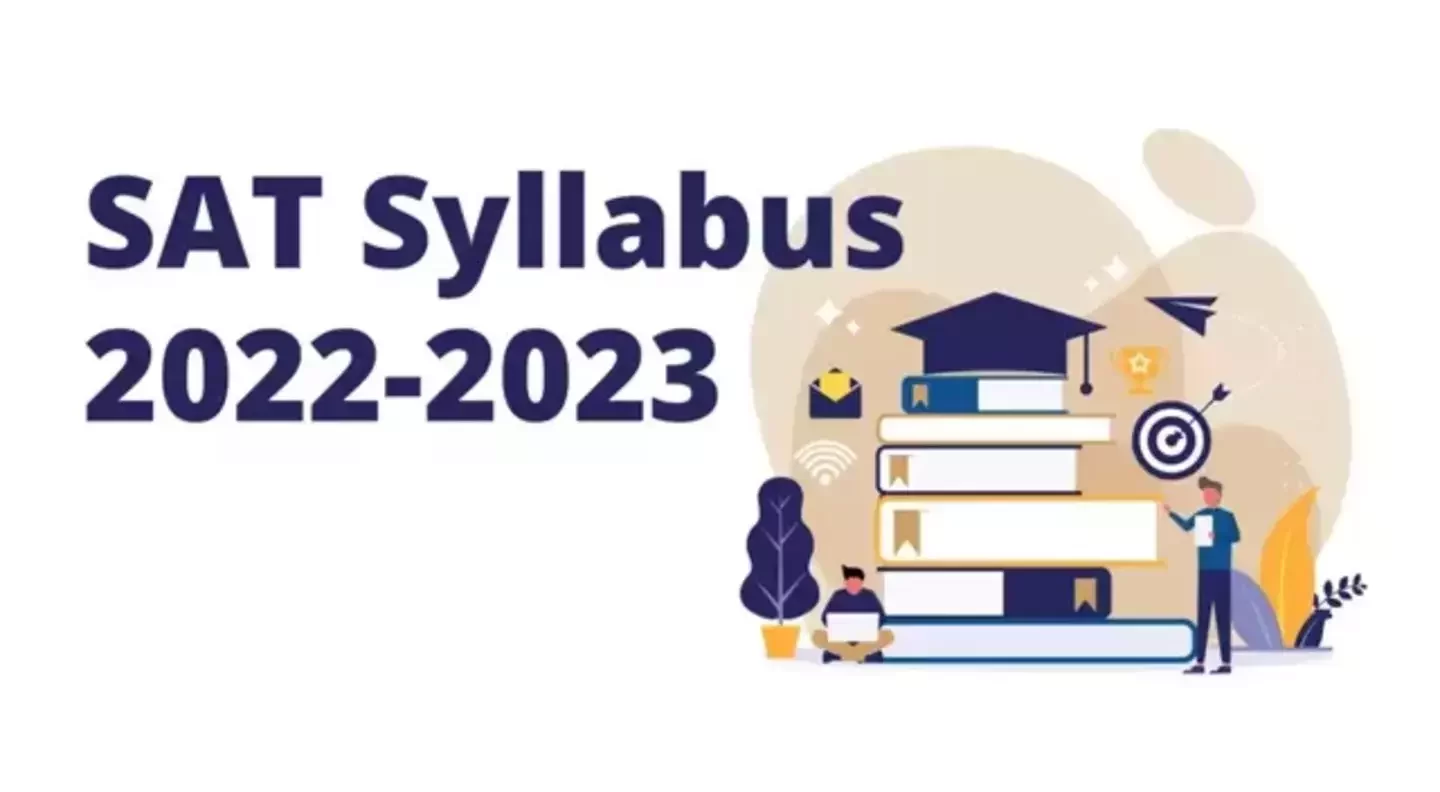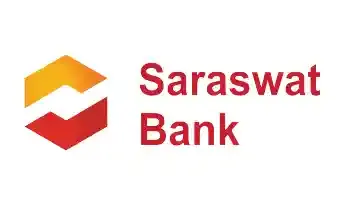Get instant loan offer suitable to your profile !


On this Page:
SAT Syllabus - Are you planning to give the SAT examination? If yes then explore this blog to get detailed knowledge about SAT syllabus.
It consists of three tests and takes three hours to complete:
 Reading Test
Reading Test
 Writing and Language Test
Writing and Language Test
 Math Test.
Math Test.

|
Reading |
65 minutes |
52 multiple-choice questions |
|
Writing and Language |
35 minutes |
44 multiple-choice questions |
|
Math |
80 minutes |
38 (30 MCQs and 8 Grid-in) and 20 (15 MCQs and 5 Grid-in) |
|
Total |
180 minutes |
154 Questions |
Most of the questions are multiple-choice, but some math questions require you to write in your answer.
It is better to guess than to leave the response blank on all questions.
Read more about: What is the SAT Test and How To Prepare For It?
Struggling with Your Admissions?

During the Reading Test, you will read five passages and answer multiple-choice questions about them. A total of 52 questions are included in this test, which has a time limit of 65 minutes. The five passages on the Reading Test include four standalone passages and one pair of passages that you read together. The standalone passages and the paired set are each 500–750 words. The passages are drawn from the following types of documents:
 1 literary passage from a work of fiction.
1 literary passage from a work of fiction.
 1 or 2 passages from a U.S. founding document or a text in the Great Global
1 or 2 passages from a U.S. founding document or a text in the Great Global
 1 passage from a work of economics, psychology, sociology, or some other social science.
1 passage from a work of economics, psychology, sociology, or some other social science.
 2 passages from scientific works that examine foundational concepts and developments in Earth science, biology, chemistry, or physics.
2 passages from scientific works that examine foundational concepts and developments in Earth science, biology, chemistry, or physics.
Reading Test Questions Are Like:
The questions on the reading test fall into three broad categories:
 How the Author Uses Evidence
How the Author Uses Evidence
You may be asked to demonstrate your understanding of how an author uses evidence to support a claim. Depending on the question, you might be asked to:
 Identify the part of a passage that supports a point the author is making.
Identify the part of a passage that supports a point the author is making.
 Find evidence in a passage that best supports the answer to a previous question.
Find evidence in a passage that best supports the answer to a previous question.
 Find a relationship between an informational graphic and the passage it’s paired with.
Find a relationship between an informational graphic and the passage it’s paired with.
 Understanding Words in Context
Understanding Words in Context
Many of the questions on the Reading Test ask you to identify the meaning of a word in context. The “in context” part is important: the questions ask you to use context clues in a passage to figure out which meaning of a word or phrase is being used. Other questions will ask you to decide how an author’s choice of words shapes meaning, style, and tone.
 Analysis in History/Social Studies and in Science
Analysis in History/Social Studies and in Science
The Reading Test includes passages in the fields of history, social studies, and science. You’ll be asked questions that require you to draw on the reading skills needed most to succeed in those subjects.
For instance, you might read about an experiment and then see questions that ask you to:
 Examine hypotheses.
Examine hypotheses.
 Interpret data.
Interpret data.
 Consider implications.
Consider implications.
The answers are based only on the content stated in or implied by the passage, not your prior knowledge of the subject.
Read Also:

The Writing and Language test is a multiple-choice test in which you read passages and find and fix mistakes and weaknesses.
This part of the SAT is 35 minutes long, includes 4 passages, and contains 44 multiple-choice questions.
What the Writing and Language Test Passages Are Like
The 4 passages on the test are each 400–450 words. The complexity of the passages varies: some are more challenging and others more straightforward.
The passages are about a variety of topics, including careers, science, the humanities, and history and social studies.
The purpose and format of each passage varies:
 At least 1 is a narrative, meaning it describes events in a storylike way. This passage is not a work of fiction, but it could be a nonfiction account of an historical event, or it might describe the sequence of events in a scientific experiment.
At least 1 is a narrative, meaning it describes events in a storylike way. This passage is not a work of fiction, but it could be a nonfiction account of an historical event, or it might describe the sequence of events in a scientific experiment.
 The other passages are either argumentative, meaning they try to convince or persuade the reader of something, or else informative and explanatory.
The other passages are either argumentative, meaning they try to convince or persuade the reader of something, or else informative and explanatory.
Some of the passages contain charts, graphs, or infographics that you interpret together with the written part of the passage.
What the Writing and Language Test Questions Are Like
Each passage has 11 multiple-choice questions.
The questions fall into two main types: those where you improve the expression of ideas, and those where you have to recognize and correct errors in sentence structure, grammar, usage, and punctuation.
Expression of Ideas
These questions ask you to improve the substance and quality of the writer’s message.
They can be divided into three kinds:
 Development questions are about main ideas (topic sentences and thesis statements), supporting details, focus, and quantitative information in tables, graphs, and charts.
Development questions are about main ideas (topic sentences and thesis statements), supporting details, focus, and quantitative information in tables, graphs, and charts.
 Organization questions focus on logical sequence and placement of information and ideas as well as effective introductions, conclusions, and transitions.
Organization questions focus on logical sequence and placement of information and ideas as well as effective introductions, conclusions, and transitions.
 Effective Language Use questions ask you to improve precision and eliminate wordiness, consider style and tone, and combine sentences to improve flow and to achieve particular rhetorical effects (such as emphasizing one point over another).
Effective Language Use questions ask you to improve precision and eliminate wordiness, consider style and tone, and combine sentences to improve flow and to achieve particular rhetorical effects (such as emphasizing one point over another).
These questions focus on recognizing and correcting grammar, usage, and mechanics problems in passages. These questions ask you to recognize and correct errors in sentence structure (like run-on or incomplete sentences), usage (like lack of subject-verb or pronoun-antecedent agreement), and punctuation (like missing or unnecessary commas).

The Math Test focuses on the areas of math that play the biggest role in college and career success:
 Heart of Algebra, which focuses on the mastery of linear equations and systems.
Heart of Algebra, which focuses on the mastery of linear equations and systems.
 Problem Solving and Data Analysis, which is about being quantitatively literate.
Problem Solving and Data Analysis, which is about being quantitatively literate.
 Passport to Advanced Math, which features questions that require the manipulation of complex equations.
Passport to Advanced Math, which features questions that require the manipulation of complex equations.
The Math Test also draws on Additional Topics in Math, including the geometry and trigonometry most relevant to college and career readiness.
The Math Test is divided into two parts: a no-calculator portion and a calculator portion. In both portions, most of the test is multiple choice, but some of the questions at the end ask you to write the answer (these are called “grid-ins”). Everyday formulas are provided for you to use.
Breakdown of the Test
| No-Calculator Portion | |
|---|---|
|
Time allotted |
25 minutes |
|
Total Questions |
20 |
|
Multiple-choice questions |
15 |
|
Grid-in questions |
5 |
| Calculator Portion | |
|---|---|
|
Time allotted |
55 minutes |
|
Total Questions |
38 |
|
Multiple-choice questions |
30 |
|
Grid-in questions |
8 |
The math questions are divided into four categories, with algebra being the most important.
|
Heart of Algebra |
19 |
|
Problem Solving and Data Analysis |
17 |
|
Passport to Advanced Math |
16 |
|
Additional Topics in Math |
6 |
We hope this blog helped you to get in-depth knowledge. If you still have any doubts do let us know in the comment section.
Check Your Education Loan Eligibility

Ask from a community of 10K+ peers, alumni and experts
Trending Blogs
Similar Blogs

Network with a community of curious students, just like you
Join our community to make connections, find answers and future roommates.. Join our CommunityCountry-Wise Loans
Best Lenders for Education Loan

ICICI Bank

Axis Bank

Union Bank

Prodigy

Auxilo

Credila

IDFC

InCred

MPower

Avanse

SBI

BOB

Poonawalla

Saraswat